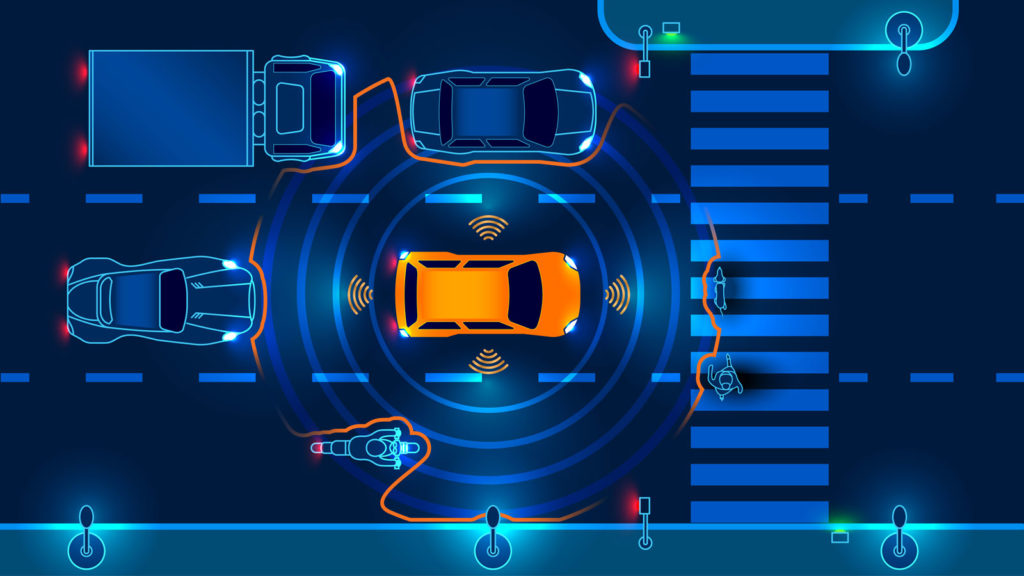Dr Sandeep Sovani, global director, automotive industry at Ansys, explains why simulations of AVs require a methodical approach and how there’s more to AVs than just driverless cars, ahead of his presentation on this topic at the Autonomous Vehicle Test & Development Symposium. For more information, up-to-date programs and rates, click here.
What is the background to your presentation?
Simulation is very well known in the industry as a key enabler for the success of AVs because it has the ability to replace billions of miles of road testing that would otherwise be required to validate the safety of AVs. I view the challenges and opportunities of simulation in 5 aspects: sensors and sensor implementation; functional safety and cybersecurity; the automated driving software; adapting the vehicle platform to autonomy; and finally, bringing all these components together in a complete simulation of an AV driving in a virtual environment.
How does simulation help sensor development?
There is a lot riding on sensors, as they are the eyes and ears of the vehicle, so from a simulation perspective, we focus not only on the sensors themselves, but also on their sub-components and their integration into the vehicle.
For the core development, we start with simulations of the sensor components. Once the sensors are installed into the vehicle they may start to behave differently than when tested in isolation, so being able to predict this behavior early on and account for any variations is very important, and simulation can help with that, too. Finally, simulation can be used for either training or testing the AI behind the sensors.
Bringing everything together, we can perform simulations of the vehicle driving through a scene and check whether the sensor is capturing the scene properly. An important benefit of this methodical approach is that when we do simulations at the scenario level, we can include details right down to the component level and how it is integrated into the vehicle, so the scenario simulation becomes super-accurate.
What are some of the main challenges in simulation today?
This is a developing field, so there are challenges across the board. Some of the challenges are the result of having to create sensor simulations for new sensors such as infra-red sensors and new lidar concepts. We need the right simulation tools.
Another crucial aspect is automating the creation of world models. The ultimate simulation is a virtual vehicle in a virtual world, so first, you have to create a virtual world. The real world has so many details and imperfections: road surfaces, objects on the side of the road (eg. fire hydrants), different kinds of signs, textures, etc.

In video games, generating world models tends to be done manually, which is very man-power intensive. The needs of AV simulation are orders of magnitude bigger because every street and every aspect of every street need to be modeled. It’s an enormous task, so techniques are being developed to automate the modeling of these aspects, including the use of existing HD maps and generating 3D data by driving a vehicle equipped with a lidar through a particular neighborhood.
Something else that’s being worked on is massive-scale simulation. We’ve been doing massive scale simulation for a long time in other business areas – it’s just a step that eventually needs to be taken. You need to be doing thousands of simulations at the same time, so you can do millions of miles every day in virtual reality.
How can these challenges be met?
When we model sensors in detail at the component level and the vehicle integration level, those models are highly multi-physics with deep detail physics, so currently, they don’t run at real-time. To get to that point, we have various techniques of reduced order modeling (ROM). We have some patent pending methods for ROM for radars that should allow real-time – and faster – simulation without degrading the accuracy too much.
The ROM techniques are always about preserving the accuracy as much as possible but increasing the speed. If you drop the accuracy by a few percent but you gain speed by a factor of 10, that’s a fair trade-off and it means the ROM is working well. These techniques can be used with every type of sensor.
What is the ideal balance between physical testing and simulation?
We have always said that simulation will never completely replace physical testing as it has its own unique advantages: it is, for instance, able to uncover things that one has never even imagined. It is also essential for validating that the models are correct. Computer models can go wrong very easily.
On the other hand, simulation gives great leverage over physical testing. Simulation can do orders of magnitude more testing once the models are validated and the things that need to be tested are known.
Simulation is also really good at robustness tests around a certain situation. If we find a problem in real-world testing – for example, a pedestrian wearing a certain color of clothes was missed – then we can ‘budge’ that in simulation. This means that we create adjacent cases where we change the color of the clothes of the pedestrian in a parametrized way around that particular color and create hundreds of other situations. Once you develop a fix to make sure the camera does recognize the pedestrian, you can test it for robustness over this bigger matrix and make sure the pedestrian is being recognized, whatever color they are wearing.
Anything else?
 One point I would like to make is that a lot of the focus today is on self-driving cars and autonomous ground vehicles, but the same techniques and challenges exist in engineering other types of autonomous vehicles. We have been focusing a lot on air taxis, drones and autonomous defense air vehicles, as well as sub-sea rovers. Self-driving cars are the spearhead, but the principles are applicable to a wide range of applications across industries and we’re looking at all of them.
One point I would like to make is that a lot of the focus today is on self-driving cars and autonomous ground vehicles, but the same techniques and challenges exist in engineering other types of autonomous vehicles. We have been focusing a lot on air taxis, drones and autonomous defense air vehicles, as well as sub-sea rovers. Self-driving cars are the spearhead, but the principles are applicable to a wide range of applications across industries and we’re looking at all of them.
Catch Sandeep’s presentation titled “bringing accuracy to autonomous vehicles simulation with high-fidelity physics” at the Autonomous Vehicle Test & Development Symposium. For more information, up-to-date programs and rates, click here.


